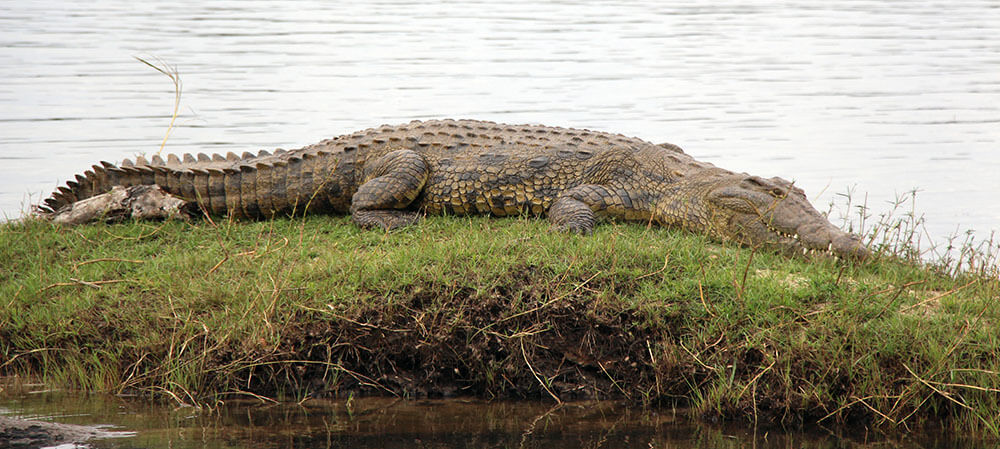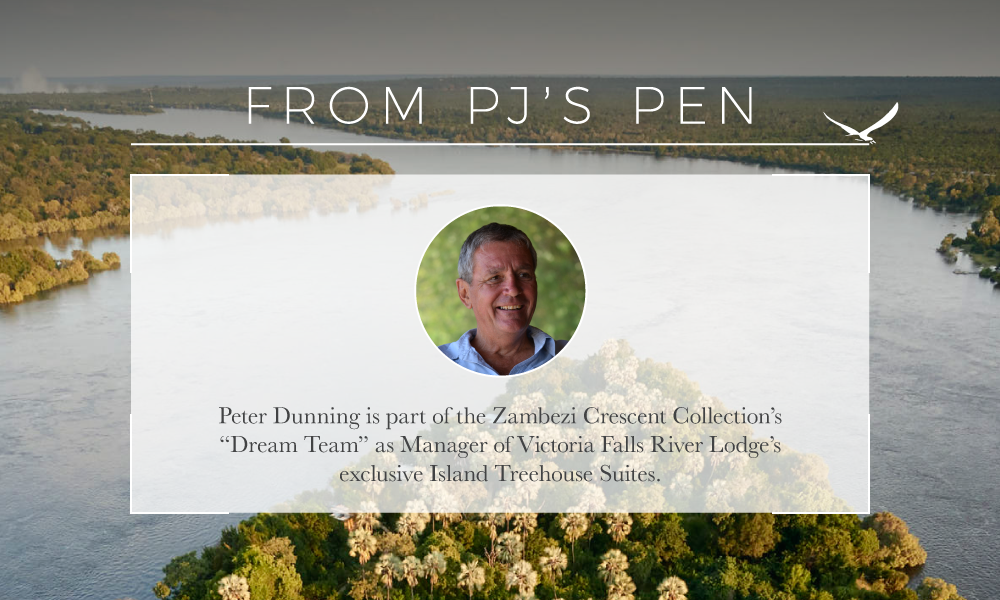As 2019 draws to its close, and we look forward to the beginning of 2020, I thought it would be interesting to examine some little-known facts about this wonderful river that we call home. Decent rains in Western Zambia and Eastern Angola have caused the Zambezi to rise quickly, after the disastrously low levels we experienced in October. On 9th December, the flow at The Big Tree measuring station just upstream of the waterfall was 252 cubic meters per second, slightly higher than on the same date last year. By 18th December the flow was 282 versus 227 last year, 24% higher.
Angola accounts for 18% of the entire river basin, whilst Zambia has the biggest share, at 40%. Botswana has 3%, mostly in the form of the Chobe River which flows into the Zambezi at Kazungula.
The Victoria Falls is situated along the length of the river at a point where these three countries are providing by far the bulk of the flow. As the Zambezi flows further eastwards, Zimbabwe’s share kicks in with 16% of the basin. Below Lake Kariba, waters from Malawi (8% of the basin),
Mozambique (12%), and improbably even Tanzania (2%) all feed the mighty river before it discharges into the Indian Ocean, 2,574 kilometres, or 1,600 miles from its source.
A look at satellite photos of the country to our north reveals dense cloud overlarge parts of Angola and Zambia, which is good news indeed.
Our Banded Mongoose clan produced six babies some time in mid to late November. Average litter size ranges from two to six babies, and the females practice synchronous birthing, so I think that two females probably had babies. Lactating females will feed babies other than their own. The literature says that the babies will leave the den on short excursions at around one month old.
They are ranging all over the island now, and their mothers are extremely attentive and protective of the babies. Given that infant mortality is 50% by three months old, you can understand the reasons for such caution.
Fish Eagles must be a threat, especially when the clan is out on the sandbanks foraging. We know from the last litter’s grisly demise that pythons will kill and eat mongooses of any size. I think the main threat here is the Water Monitor. We have a large population of these big aggressive lizards on the island, and they are formidable predators. At the time of writing this blog, I’m very happy to report that we still have six babies with us. They are growing in size very fast and defying the odds.

During early December, the mainland tented section of Vic Falls River Lodge was closed for ten days to undergo extensive refurbishment and renovation. The huge main guest area has been partially re-thatched, and new upright poles were wedged into place.
The labourers doing the work found a large scorpion under the deck, and I was able to photograph and identify it.
Despite their fearsome appearance, Rock Scorpions (Hadogenes) are not aggressive and very rarely use their sting. Their pincers and tails have long sensory hairs, and they can live up to twenty years.
Their venom is so weak that they seldom use their stings for defense or prey capture. They lay their tail flat to enable them to squeeze into narrow gaps to avoid being eaten by baboons.
There is an enormous Bird Plum Tree (Berchemia Discolor) at the base of the down ramp to the linen store. It drops a carpet of tiny yellow blossoms in December and will produce its delicious fruit next month.
Elephants, baboons, monkeys, impala and kudu love to eat the fruits. Birds, especially louries, pigeons, starlings, barbets, parrots and hornbills, will flock to the tree once the fruit is ripe.
The Water Berries (Syzgium Guineense) are also in flower now. These beautiful trees so characteristic of the upper Zambezi spend half the year with their roots well underwater and half dry. They often overhang the river and drop their shiny purple fruits into the flow as a means of dispersal.

On 23 December some American guests took photos of one of the biggest crocodiles I have ever seen, whilst on a boat cruise.

We celebrated Christmas Eve completely full – all tents and treehouses were occupied – on the banks of the river, in traditional style, with a marimba band from town.
It was a gorgeous evening, and the rain held off.
We were honoured to have as guests on the island Michael Douglas, Catherine Zeta-Jones, and their two children.
They left a generous donation towards the Victoria Falls Anti- Poaching Unit when they left us on Christmas Day to continue their safari in Mozambique, Zanzibar, and The Serengeti.
Every year in lieu of giving our guests Christmas gifts, Victoria Falls River Lodge makes donations based on occupancies to this very fine and totally self-funding organisation. www.vfapu.com

The rainy season produces a special, brief and very beautiful golden light as the sun sets behind us. On the longest day of the year, I was lucky to catch it from the island. As the year draws to a close, we need more rain badly. Let us hope that January brings it in abundance. On behalf of us all living here on the banks of the Zambezi.
I wish all who read this blog a healthy, peaceful, and nature-filled 2020.



